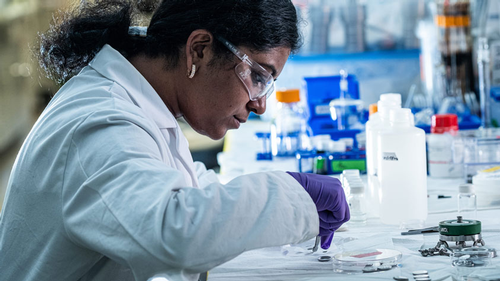Researchers Test Silicon Anodes, Aluminum Coatings
MONDAY, JANUARY 27, 2020
In revisiting a study in the American Chemical Society's ACS Applied Energy Materials, engineers from Rice University's George R. Brown School of Engineering, in Houston, have discovered a phenomenon that could lead to better battery usage in electric cars and off-grid energy storage.
The engineer team was led by postdoctoral fellow Anulekha Haridas after chemical and biomolecular engineer Sibani Lisa Biswal found a method to provide steady and stable cycling for applications.
The Research
Previously, in the ACS Applied Energy Materials study, research was laid out to describe an unknown mechanism that caused lithium to become trapped in batteries, therefore limiting the number of times it could be charged and discharged at full power.
However, through further investigation Biswal found that in not maxing out a battery’s storage capacity, a steady and stable cycling for applications was created. According to Biswal, conventional lithium-ion batteries use graphite-based anodes that have a capacity of less than 400 milliamp hours per gram (mAh/g). But, in using silicon, although it expands at it alloys with lithium, the anodes have potentially 10 times that capacity.
To avoid stressing the anode, Biswal made the silicon porous and limited its capacity to 1,000 mAh/g.

 |
| Rice University George R. Brown School of Engineering |
|
In revisiting a study in the American Chemical Society's ACS Applied Energy Materials, engineers from Rice University's George R. Brown School of Engineering, in Houston, have discovered a phenomenon that could lead to better battery usage in electric cars and off-grid energy storage. |
“Maximum capacity puts a lot of stress on the material, so this is a strategy to get capacity without the same degree of stress,” Biswal said. “1,000 milliamp hours per gram is still a big jump.”
From this point in the study, a team of engineers paired the porous, high-capacity silicon anodes (in place of graphite) with high-voltage nickel manganese cobalt oxide (NMC) cathodes. The result: stable cyclability at 1,000 mAh/g over hundreds of cycles in full cell lithium-ion batteries.
In addition to these findings, the team also added a 3-nanometer layer of alumina (applied via atomic layer deposition) to some of the batteries. The team found that by coating the battery with the alumina coating, the cathode was protected from breaking down in the presence of hydrofluoric acid—which forms when water invades the liquid electrolyte—and accelerated the battery’s charging speed.
In what appears to be an extensive trapping as a result of the fast lithium transport through alumina, Haridas said, “This lithium-trapping mechanism effectively protects the cathode by helping maintain a stable capacity and energy density for the full cells.”
Co-authors of this study included Rice graduate students Quan Anh Nguyen and Botao Farren Song, and Rachel Blaser, a research and development engineer at Ford Motor Co. Ford’s University Research Program supported the research.
Tagged categories: Coating Materials; Coatings Technology; Colleges and Universities; Energy efficiency; Research; Research and development







